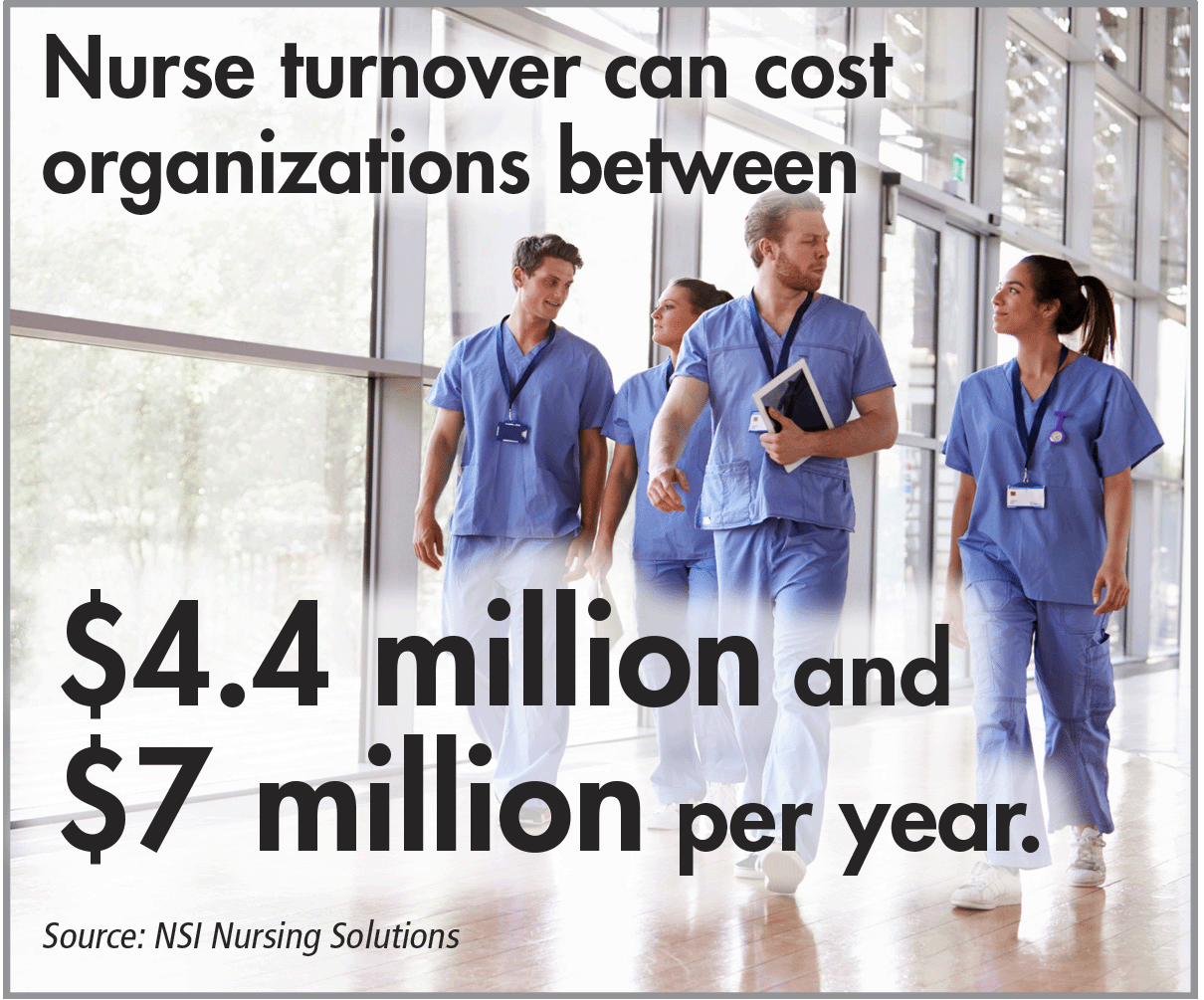How nurse residency programs can help organizations add to their bottom line.
By Tierney McAfee
Nurse residency, or “grow your own,” programs are a critical part of the future of nursing. They’re not only helping organizations solve for the growing nurse shortage facing the U.S., they’re also helping participating healthcare systems and hospitals save money.
“It’s one of those things that absolutely over time will lower costs and increase retention for hospitals and health organizations,” says Liz Bickley, senior vice president of healthcare client services for Cielo, a strategic recruitment process outsourcing (RPO) partner.
“It requires initial investment to build the infrastructure and get the programs up and running, but then you will begin to avoid some of your premium pay because departments are better staffed, and avoid some of your contingent costs or traveler nurse costs because you have more staff,” Bickley explains.
The establishment of nurse residency programs is also foundational to new nurse graduates’ transition and retention, says Bickley.
“Nurses who are welcomed into an organization as new graduates, who have a really robust continued education program, who are supported appropriately from a preceptor program, tend to stay,” she explains.

Meanwhile, hospitals with nurse residency programs demonstrated a 6 to 10 percent reduction in voluntary turnover rates, which translates to approximately $17.6 million in annual statewide cost savings, according to a 2018 article in the Journal of Nursing Regulation.














